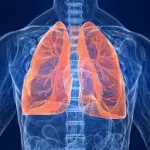Chronic Obstructive Pulmonary Disease (COPD) remains a significant global health challenge, ranking as the third leading cause of death worldwide. In 2019 alone, COPD claimed over 3.2 million lives. A recent study published in the Journal of the COPD Foundation highlights a critical issue in the management of this condition: widespread inhaler misuse among hospitalized COPD patients, underscoring the urgent need for better training and patient-specific interventions.
The Role of Inhalers in COPD Management
Inhalers are a cornerstone in the treatment of COPD, offering a direct method to deliver medication to the lungs. However, the effectiveness of inhalers is heavily dependent on the patient’s technique. Improper inhalation techniques can lead to inadequate drug delivery, resulting in poor symptom control, reduced quality of life, increased risk of exacerbations, and even hospitalization. Dry powder inhalers (DPIs), for instance, require patients to inhale strongly and deeply to ensure the medication reaches the small airways. Failure to do so can worsen the patient’s condition.
Study Overview and Findings
The study, conducted at the Hospital of Fribourg (HRF) in Switzerland, assessed 96 COPD patients admitted between August 1, 2022, and April 3, 2023. The mean age of the participants was 71.6 years. Each patient was evaluated for critical errors in inhaler technique within 72 hours of admission by a physiotherapist using a custom checklist tailored to different inhaler types. Critical errors were defined as any action that could negatively impact the drug’s delivery to the distal airways.
The study found that 69% of the patients misused their inhalers, with 66% making critical errors and 14% exhibiting insufficient peak inspiratory flow (PIF). On average, patients used three different inhalers, and 82% of them misused at least one. Even after remedial training, a significant proportion of patients continued to struggle with proper inhaler use.
The Importance of Training and Patient-Specific Approaches
The study highlights the effectiveness of training in reducing inhaler misuse. After one session, critical errors decreased by 45%, with further reductions observed after subsequent sessions. However, despite repeated training, some patients continued to misuse their inhalers due to factors such as cognitive impairment, poor fine motor skills, and the inability to synchronize inhalation with inhaler activation.
These findings emphasize the need for healthcare professionals to consider patient-specific characteristics when prescribing inhalers. Regular monitoring of inhalation techniques and PIF is crucial, as these can change over time and with treatment. The study suggests that the presence of a respiratory physiotherapist with expertise in inhaler techniques is essential, as most physicians may lack the time or knowledge needed to adequately train patients.
Implications for Clinical Practice
The study’s conclusions underscore the need for a comprehensive approach to managing COPD in hospitalized patients. The routine assessment of inhalation techniques and PIF should become a standard part of clinical evaluations for COPD patients, regardless of the reason for hospitalization. This approach will help ensure that patients receive the full therapeutic benefit of their prescribed inhalers, ultimately improving treatment outcomes and reducing the risk of exacerbations and hospitalizations.
Journal Reference: Grandmaison, G., Grobety, T., Vaucher, J., et al. (2024). Prevalence of Critical Errors and Insufficient Peak Inspiratory Flow in Patients Hospitalized With COPD in a Department of General Internal Medicine: A Cross-Sectional Study. Journal of the COPD Foundation. doi:10.15326/jcopdf.2024.0505.












